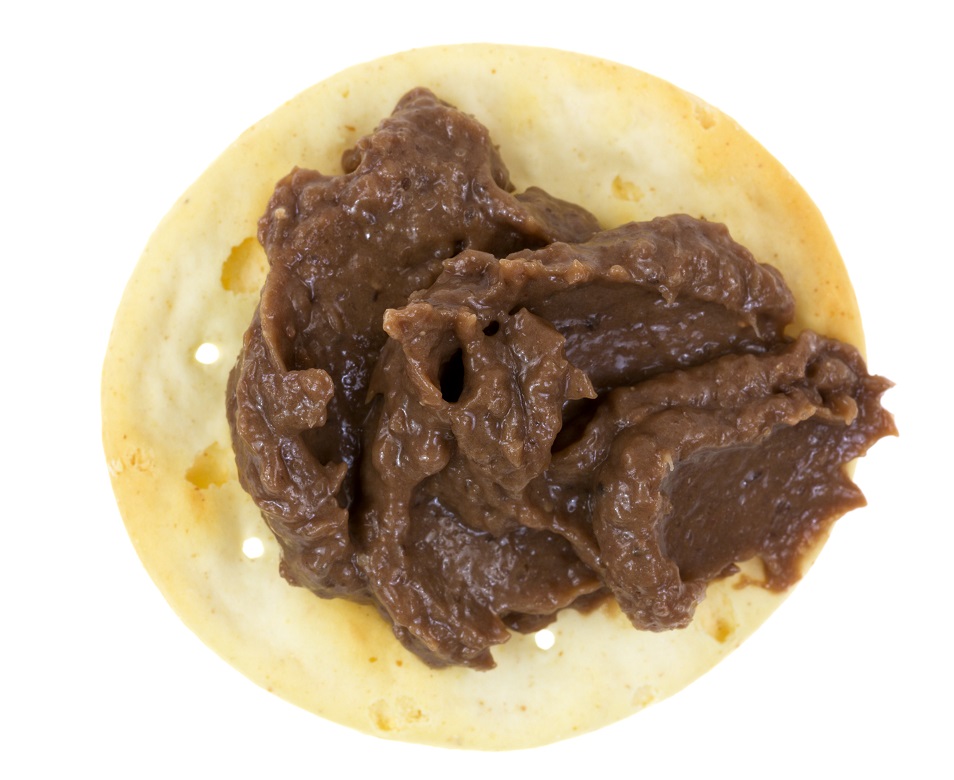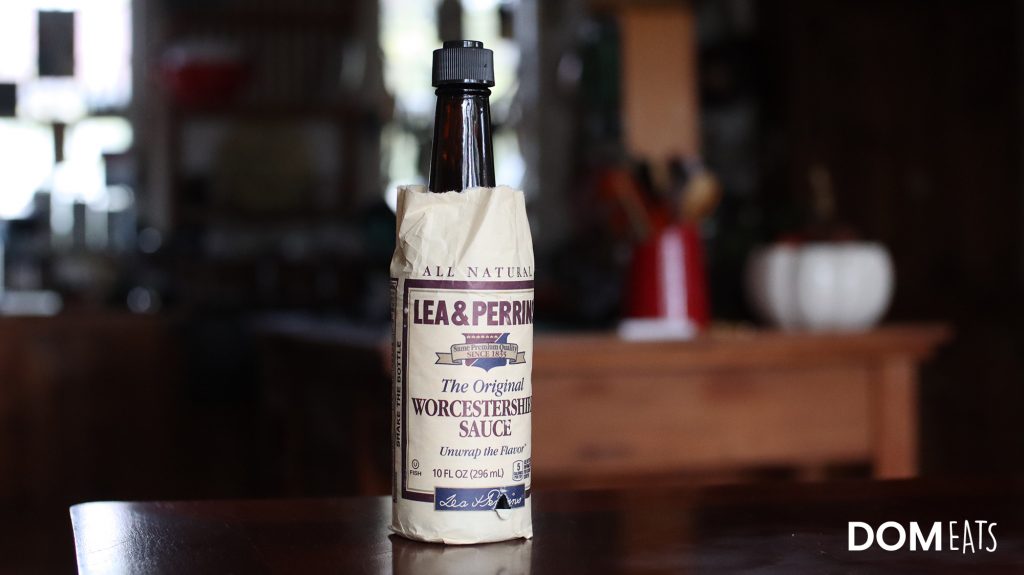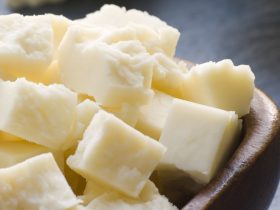Known for its distinctly fishy flavor offset by notes of umami or savory traces, the finer parts of anchovy paste’s flavor can be highly variable depending on what sort of spices were incorporated into its ingredients.
Anchovy paste is added into a variety of dressings, dishes or sauces in order to add a strong savory body to their taste profile, though it is occasionally used by itself as a main ingredient, such as in its application as a toast spread.
However, certain individuals may find the somewhat fishy taste of anchovy paste not to their liking, or otherwise find themselves unable to consume this particular umami paste for any reason.
The most common flavor substitutes for anchovy paste include Worcestershire sauce, fish sauce, and liquid aminos. The most common spread substitutes include shrimp paste, Japanese Kamaboko, and Filipino Bagoong paste. The most common sauce/dressing substitutes include MSG powder, Umeboshi paste, and miso sauce.
Reasons to Substitute Anchovy Paste
The need to substitute anchovy paste with a sufficiently similar replacement can occur for a variety of reasons, such as an intolerance to fish or other ingredients present in anchovy paste, religious or ethical beliefs or even simple personal preference.

Substituting anchovy paste is relatively easy for any home cook or restaurant chef owing to the fact that a multitude of potential replacements may exist, the majority of which are available in practically any market around the globe, and some of which are likely already in their kitchen or pantry.
Can Anchovy Paste be Substituted with Whole Anchovies?
Depending on the particular reason why replacing anchovy paste in a recipe has become necessary, it is possible for a cook or chef to instead simply use anchovy filets or similar forms of anchovy that are not the paste itself.
While anchovy paste often incorporates such food products like sugars, vinegar and spices into its ingredients, using whole anchovies and similar forms of the fish can still provide much of the same flavors that anchovy paste itself would have to a dish.
The physical and textural difference between the two, however, makes replacing anchovy paste in this manner rather unsuitable in cases such as its addition to sauces or dressings, as it is likely the whole anchovies will ruin the texture of these foods.
Anchovy Paste Flavor Substitutes
Perhaps the easiest characteristic of anchovy paste to substitute is that of its taste, with a variety of other umami flavored food products existing that can act and move in much the same way anchovy paste itself can when added to a dish.
Worcestershire Sauce
Possessing much the same savory yet slightly earthy flavors as anchovy paste, Worcestershire sauce is an excellent candidate for substitution of anchovy paste in foodstuffs such as sauces, dressings and other dishes that can fully incorporate Worcestershire sauce despite its liquid nature.

However, most forms of Worcestershire sauce are known to contain anchovies in some shape or form, making it an unsuitable replacement for anchovy paste if the primary reason for its substitution is because of the presence of anchovies themselves.
If you are allergic to anchovies, religiously or ethically obligated to not consume them or for any other reason do not desire to consume anchovies in any way, it is best to choose a different anchovy paste substitute from this list.
Fish Sauce
Extremely similar to anchovy paste in flavor, the primary body of fish sauce may in fact be somewhat more intense than anchovy itself, meaning less must be added to a dish so as to maintain the same balance of flavors in the dishes’ flavor profile.
Fish sauce, much like Worcestershire sauce, is also a liquid, and as such is not suitable for addition to dishes that cannot incorporate fluids properly, making fish sauce a better anchovy paste substitute in things like sauces or dressings, where it can be added homogenously to its ingredients.
Liquid Amino Seasoning
Somewhat less commonly found in grocery stores outside of the United States and Canada, liquid amino seasoning presents a salty yet umami flavor somewhat more intense than that of anchovy paste, with the caveat that it does not possess any of the fishy notes ordinarily found in anchovy paste.
Usually consisting of treated soybeans or coconut, liquid amino seasoning may also act as a vegan alternative to anchovy paste, alongside their capacity as a gluten free alternative, making liquid amino seasoning the best candidate for substituting anchovy paste from a religious or ethical standpoint.
Anchovy Paste Spread Substitutes
Another main use of anchovy paste, several other different seafood based pastes may act as suitable substitutes in the capacity of a spread, all of which are somewhat similar in taste and texture while not containing anchovies in any form.
Shrimp Paste
The most widely available in countries outside of Asia, shrimp paste is a fermented condiment primarily originating from Southeast Asia.
With a distinctly saltier and somewhat more pungent taste, shrimp paste can act as a potential substitute spread for anchovy paste so long as it is spread more thinly than the anchovy paste would be. This is done in order to neutralize the relatively stronger flavor of shrimp paste.
Being a mostly solid paste in its usual form, shrimp paste is not suitable for incorporation into such things like sauces or dressings, unless the intended goal is for a somewhat uneven texture to take shape.
Japanese Kamaboko (Cured Pureed White Fish Cake)
While not precisely a paste, Japanese kamaboko is a form of steamed and fermented fish with a distinctly milder flavor than that of anchovy paste, though they share much the same savory and fishy notes when eaten.

Japanese kamaboko is best used as an anchovy paste substitute in dishes that do not require a particularly grainy texture in its paste, such as in certain types of baked goods or on crackers wherein the somewhat jelly-like texture of kamaboko is not noticeable.
Filipino Bagoong Paste (Fermented Krill Paste)
Occasionally similar in constituent ingredients to shrimp paste, bagoong paste can also be made of fermented fish or krill, oftentimes also producing fish sauce as a byproduct of its fermentation process.
However, certain types of bagoong are made from anchovies, and if the primary reason for substituting anchovy paste in a recipe is the fact that it is made of anchovies, it is best to check the ingredients list of the bagoong prior to using it as a substitute.
Filipino bagoong paste is considered to be quite similar in flavor and texture to anchovy paste, though it presents a significantly darker appearance and a somewhat more pungent aroma owing to its fermented nature.
Normally added to a variety of Filipino dishes, bagoong works best in meals wherein the savory and fishy flavor is disseminated and diluted somewhat by other constituent ingredients in the meal.
Anchovy Paste Sauce and Dressing Substitutes
Another utilization of anchovy paste that is commonly seen in a variety of recipes, the addition of this particular fishy paste to food products such as salad dressings and pasta sauces is quite widespread in a plethora of cultures owing to the savory flavors anchovy paste can impart to a dish.
Several substitutes exist that can replicate this effect when added to the same dressings or sauces that would normally contain anchovy paste instead, the majority of which should be available in practically any grocery store or Asian centric market.
MSG Powder
Otherwise known as monosodium glutamate, MSG powder is considered to be the essential umami or savory flavoring in its pure form, adding a distinctly savory taste to any dish it is incorporated into.
In sauces and dressings that normally use anchovy paste to create this effect, a small volume of MSG powder may instead act as a substitute, imparting much the same notes of umami that anchovy paste would with none of the fishy flavor.
Additionally, owing to its crystalline powder nature, MSG powder is found to be far easier to incorporate into sauces and dressings than the more coarse anchovy paste.
Umeboshi Paste (Japanese Fermented Ume)
Though umeboshi paste presents a sour flavor that is noticeably different from that of anchovy paste, its relative taste is considered quite mild, with the particular saltiness ordinarily found in its flavor profile being highly dependent on the brining and pickling process it undergoes during processing.
Umeboshi paste may act as an excellent substitute to anchovy paste in dishes that require a small level of acidity or sourness to also be incorporated into its taste, such as in tomato sauce or certain types of salad vinaigrettes.
Miso Sauce
Produced from fermented soybeans and several other spices, miso sauce is a diluted form of miso paste with a small volume of Japanese sake wine, sugar, and other cooking alcohols added in order to create a more fluid and silky consistency.
Considered among the finest umami ingredients, miso sauce can replace anchovy paste in a 1:2 ratio wherein every tablespoon of anchovy paste is roughly equal to half a teaspoon of miso sauce, owing to the intensity of its flavor.
Even simply in its miso paste form, anchovy paste can be readily substituted by this Japanese fermented soybean condiment in any sauce or dressing that ordinarily calls for anchovy paste itself, with the sole drawback being the lack of a fishy taste in certain types of miso sauce.
References
1. Mouritsen, Ole G., et al. Umami: Unlocking the Secrets of the Fifth Taste. Columbia University Press, 2014.
2. Kawamura, Yōjirō, and Morley Richard Kare, editors. Umami: A Basic Taste: Physiology, Biochemistry, Nutrition, Food Science. M. Dekker, 1987.
3. Wright, C. (2003). The Little Foods of the Mediterranean: 500 Fabulous Recipes for Antipasti, Tapas, Hors D’Oeuvre, Meze, and More. Harvard Common Press. p. 26. ISBN 978-1-55832-227-1.





Hi, I'm Dom
Dom Eats was started to help other people fall in love with food. While cooking can feel intimidating, it doesn't have to be.